Best Small Business Data Strategy
As the threat of cyberattacks grows, protecting sensitive business data is important. For small businesses, the stakes are even higher in some ways than for larger businesses. This is because small businesses often lack the necessity or budget to outfit their company with sophisticated cyber security solutions in the same ways that an enterprise company would. But the truth is, *any* business has the ability to apply a meaningful, cost-effective approach to data protection that can scale as the business’s security needs grow. As with most things in life, it begins by seizing opportunities.
A Mini Guide on Protecting Small Business Data
Utilizing the template below, perform a business analysis that answers two simple questions:
**What data needs protection?**
**What can be done to protect it today *and* tomorrow?**
Step 1 – Identify Areas of Improvement
The first step in any data protection strategy is to analyze the business’s failure points.
*What data needs to be protected?*
*What measures should be put in place to achieve adequate protection for my business?*
*If there are protection methods in place, is it worth it to improve on the current process?*
For example, a small health clinic will have different data protection needs than a well-established Level 1 Trauma Center. Likewise, the small clinic may not need as many protocols in place to achieve an equivalent level of protection relative to the size of the business. Since cyber security scales, it’s always best to identify any weaknesses within since each business is unique and will have its own set of requirements.
Step 2 – Learn and Teach Best Data Practices
For small businesses without a dedicated IT team, there are some fundamental principles that can be applied in order to ensure a great level of data protection. The biggest one, however, is standardization. There are three main components that should be standardized: Employee equipment, software, and network access.
First, limit the total number of devices on the network to employees only. Additionally, create a company-wide policy on mobile devices like smartphones, laptops, and tablets that clearly states what devices are allowed.
To standardize software, simply decide on what software is needed for business operations to flow uninterrupted and cut the rest. If it’s not essential to business, it’s probably not needed on the company machines.
And lastly, standardizing network access is the most fundamental, but arguably, most important step. When we talk about data protection, that will look different for every business. Doubly important is limiting *who* has access to that data since unauthorized network access can quickly produce disastrous results no matter what size a business is. A few best practices to protect network access are multi-factor authentication, a strict password policy, and company-wide limits on outside interaction.
Step 3 – Data Backup
While the failure rate of hardware is far less today than ever before, it can still fail. The largest cause of data loss in a business outside of cyberattacks is human error. In most small businesses, this will default back to employees as the main culprit. On purpose or by accident, employees should be well trained on any company-sanctioned backup practices. And the best way to ensure employee compliance is through the steps above: Standardization.
Creating a standard set of backup principles, for both employees and the business as a whole, will help keep data safe and ready to go in the event of a critical data failure.
NetCov Data Protection Audits
Whether you’re a Fortune 500 company or a smaller e-commerce shop, data should always be top of mind. Network Coverage can help audit your network and backup protocols to provide an excellent data protection strategy for any budget. If you’re ready to stop leaving data protection in the hands of fate, contact us today and let one of our data experts partner with you on creating your company’s own personalized data protection plan.

